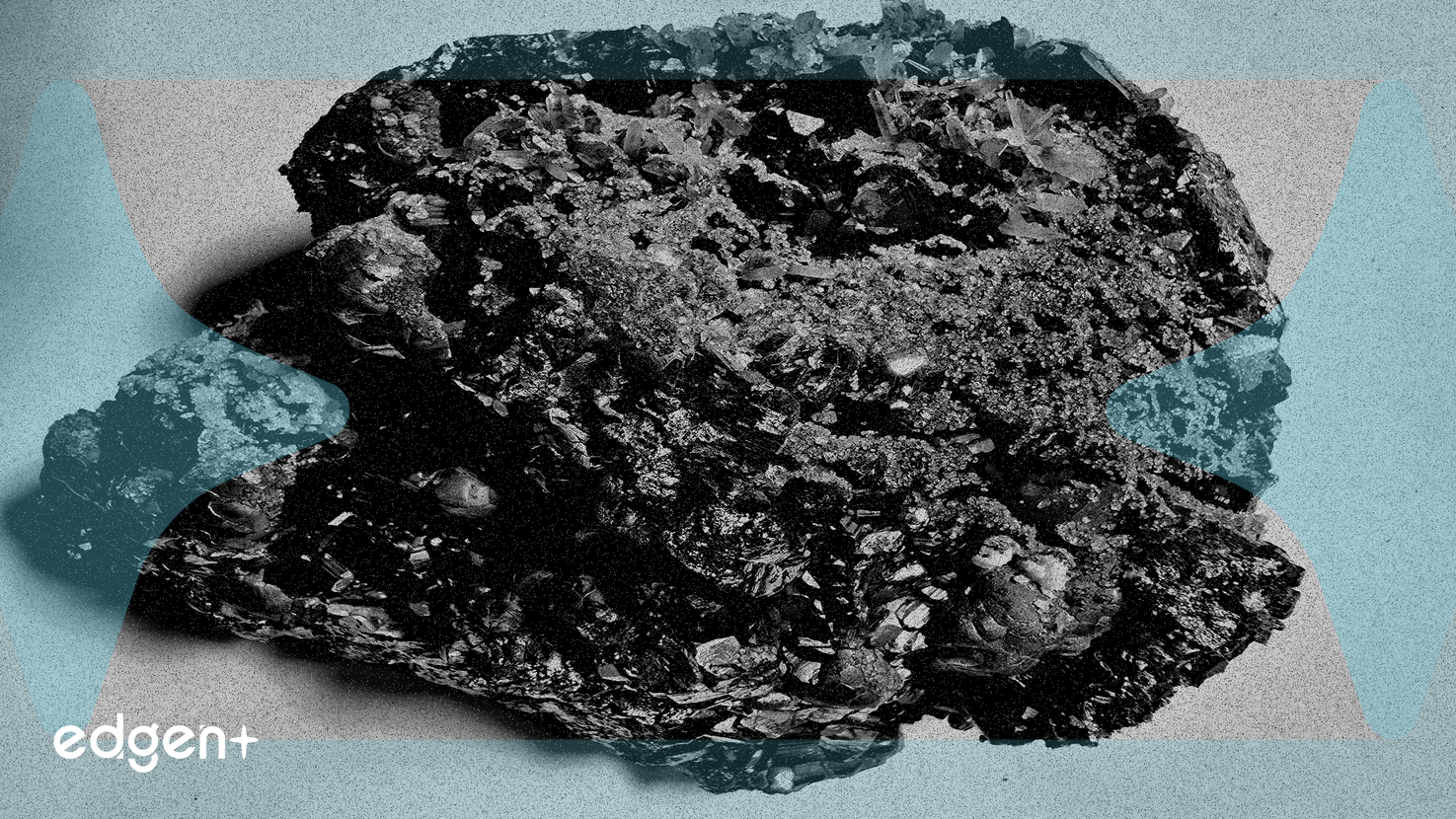Related News

Commercial Metals (CMC) Stock Declines 6% Amid Conflicting Valuation Signals
## Executive Summary Commercial Metals Company (**CMC**) experienced a notable 6.0% decline in its stock price over the past week, prompting a closer examination of its market valuation. The company currently presents a conflicted investment profile. On one hand, a Discounted Cash Flow (DCF) analysis indicates that the stock may be undervalued by as much as 25.8%. On the other, metrics such as the price-to-earnings (P/E) ratio suggest it could be overvalued, leading to significant uncertainty among investors regarding the stock's true worth. ## The Event in Detail The stock's recent performance shows a 6.0% weekly drop and a 1.7% monthly fall, with the current price fluctuating around $57-$58. This is situated within a 52-week range of $37.92 to $64.53. The core of the current debate lies in the conflicting messages from different valuation methodologies. The DCF model, which forecasts future cash flows and discounts them to arrive at a present value, points to a significant 25.8% undervaluation. This suggests that the market may not be fully appreciating the company's long-term earnings potential. Conversely, a high P/E ratio often signals that a stock's price is high relative to its current earnings, a potential indicator of overvaluation. ## Market Implications The divergence between the DCF and P/E ratio analyses creates a challenging scenario for investors. The 25.8% undervaluation suggested by the DCF model could attract value investors looking for a long-term entry point, viewing the recent price drop as a buying opportunity. However, the cautionary signal from the P/E ratio may deter more conservative or short-term-focused investors, who might interpret the high multiple as a sign of inflated value and potential for further downside. This tension could lead to increased trading volatility as the market struggles to find a consensus on the stock's fair value. ## Expert Commentary Market analysts highlight the classic conflict between future-looking and present-looking valuation metrics. A DCF analysis is inherently forward-looking, relying on projections of a company's financial performance. The finding that **CMC** is 25.8% undervalued suggests that, based on its projected ability to generate cash, its intrinsic value is significantly higher than its current stock price. In contrast, the P/E ratio is a simpler metric based on current earnings. A high P/E can indicate either that investors expect high future growth or that the stock is simply expensive. The discrepancy forces a critical question: is the market underestimating **CMC**'s future, or is the stock overpriced based on its present performance? ## Broader Context This type of valuation conflict is not uncommon, particularly in cyclical industries like metals and construction, where future earnings can be volatile and difficult to predict. The strategic expansions undertaken by Commercial Metals are a key factor in its DCF valuation, as these are expected to generate future growth. However, market sentiment can be slow to price in the benefits of long-term strategy, especially when short-term indicators are mixed. This case underscores the importance for investors of using a range of analytical tools and understanding the assumptions and limitations inherent in each model before making a decision.

Corporate Insider Buying Ratio Reaches Highest Level Since May, Signaling Bullish Sentiment
## Executive Summary Corporate insiders are increasing their purchases of their own companies' stock, a development that market analysts view as a significant bullish signal. The ratio of insider buying to selling has climbed to 0.5, its highest point since May. This contrarian indicator suggests that corporate leaders, who are presumed to have superior insight into their firms' health and prospects, believe current stock valuations are attractive, potentially signaling a market bottom and a forthcoming rebound. ## The Event in Detail According to data compiled by **The Washington Service**, a firm that tracks insider trading, the buy-to-sell ratio for corporate insiders reached 0.5 in the recent period. This ratio is a critical metric for market sentiment, as it quantifies the actions of a company's senior executives and directors. A ratio of 0.5 indicates that for every two insiders selling shares, one insider is making a purchase. This represents a notable increase in buying activity, especially when compared to historical norms where selling typically outpaces buying due to routine stock compensation and diversification strategies. Insiders inherently have high exposure to their own company's equity through incentive programs. Their decision to commit personal capital to increase this exposure is therefore seen as a powerful vote of confidence in the firm's future performance. ## Market Implications An increase in the insider transactions ratio is traditionally interpreted as a leading indicator of positive future returns in the stock market. The logic is straightforward: insiders are the best-informed market participants. Their purchasing decisions are often based on non-public, forward-looking information about their company's operational strength, product cycles, and upcoming financial results. When this activity becomes widespread, it suggests a potential undervaluation across a sector or the market as a whole, providing a potential "tailwind" for equities. This renewed confidence from insiders could signal a market trough, suggesting that the recent sell-offs have created a buying opportunity in the eyes of those with the most intimate knowledge. ## Expert Commentary Analysts widely regard a spike in the insider buy-to-sell ratio as a contrarian bullish signal. The current level of 0.5 is being highlighted as a data point that suggests renewed confidence among corporate leaders. This contrasts sharply with periods of extreme bearishness, where insider selling can overwhelm buying by ratios of 25-to-1 or more. While a normal ratio often shows more sellers than buyers (e.g., 3-to-1), the significant shift toward buying is what makes the current trend noteworthy. ## Broader Context Insider buying is a classic data point for gauging market sentiment, often referred to as the activity of the "best-informed" group. These are not speculative day trades but are typically long-term investments made by individuals with a deep understanding of他们的业务. However, it is also important to contextualize these actions. Research has investigated the relationship between corporate actions, like stock buybacks, and insider selling, finding that executives can sometimes use corporate funds in ways that serve their own self-interest. Nonetheless, the current trend focuses on insiders using their personal funds to increase their holdings, which remains a powerful and historically reliable indicator of their positive outlook. While not a foolproof predictor, a material change in insider behavior is a critical data point for investors assessing market direction.

Ramaco Resources Stock Plummets 54.9% Amid Overvaluation Concerns
## Executive Summary Ramaco Resources, Inc. (**METC**) has undergone a dramatic market correction, with its stock price falling 54.9% over the past month. This sharp downturn follows a period of substantial growth, where the stock had previously surged 101.6% year-to-date. The sell-off is largely attributed to valuation concerns, underscored by a Discounted Cash Flow (DCF) analysis suggesting the company is overvalued by 107% at its current market price. This has led to increased investor caution and a re-evaluation of the stock's fundamental worth. ## The Event in Detail The primary catalyst for the market's reassessment is the stark contrast between **Ramaco Resources'** recent stock performance and its intrinsic valuation metrics. While the stock delivered an impressive 83.8% return over the last year, the recent 54.9% plunge indicates a significant shift in investor sentiment. The core of this bearish turn is a financial modeling analysis using the Discounted Cash Flow (DCF) method. This valuation technique, which estimates a company's value by projecting its future cash flows, concluded that **METC** is trading at a price approximately 107% above its estimated intrinsic value. This discrepancy suggests that the previous stock price may have been driven by market momentum rather than the company's underlying financial health. ## Market Implications The immediate implication of this correction is heightened investor skepticism and a potential increase in short interest, as traders bet on further price declines. A 55% drop in a single month often triggers a wave of profit-taking and can shake the confidence of long-term holders. For **Ramaco Resources**, this event may lead to a period of sustained price volatility as the market attempts to find a new equilibrium that better reflects its fundamental value. The significant overvaluation indicated by the DCF analysis could deter new investment until the stock price more closely aligns with its financial projections. ## Expert Commentary Financial analysts utilize the Discounted Cash Flow (DCF) model as a cornerstone of value investing to determine a company's intrinsic worth, independent of market sentiment. The model works by forecasting a company's future earnings and discounting them back to a present-day value. In the case of **Ramaco Resources**, the 107% overvaluation figure derived from this model is a significant red flag for analysts. It implies that the market had priced in growth expectations that may be unrealistic or unsustainable, leading to the severe correction now being witnessed. Such a large gap between market price and DCF value is often seen as a signal that a stock is in a speculative bubble. ## Broader Context The situation with **Ramaco Resources** is illustrative of a broader market theme, particularly with stocks that have experienced rapid appreciation. When a stock's price decouples significantly from its fundamental financial metrics, it becomes vulnerable to sharp and sudden corrections. These events are often triggered by a shift in market sentiment, new financial data, or, as in this case, a quantitative valuation analysis that gains traction among investors. This serves as a reminder that while momentum can drive prices in the short term, valuations based on financial fundamentals tend to act as a long-term anchor for stock prices.
